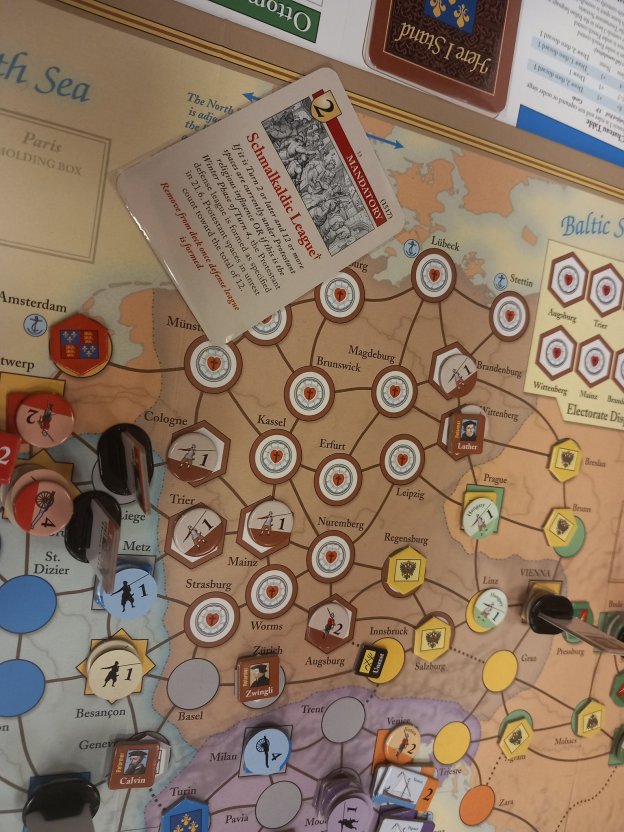Haven’t done a strategy post in over a year! But I know you like them, so there will be more of them over the next months.
Today, we’re returning to a mainstay: Here I Stand (Ed Beach, GMT Games) is one of my favorite games ever – if not my favorite game of all. (I should really do one of those Top X games of all times posts!) So far, we’ve had three strategy articles for it already:
- How to Win as the Hapsburgs in Here I Stand
- How to Win as the Papacy in Here I Stand
- How to Win as England in Here I Stand
All of them have been in the tried-and-true fashion of giving three basic tips which new and intermediate players can easily remember. Today, we’re doing that with the faction whose emergence started the whole scenario for Here I Stand: The Protestants! They play a bit differently than most of the other factions. Here’s how to make the most of the explosive potential of this faction, to avoid the most dangerous trap for it, and to push yourself over the finish line once you have come out as a fully-fledged contender.
Continue reading









